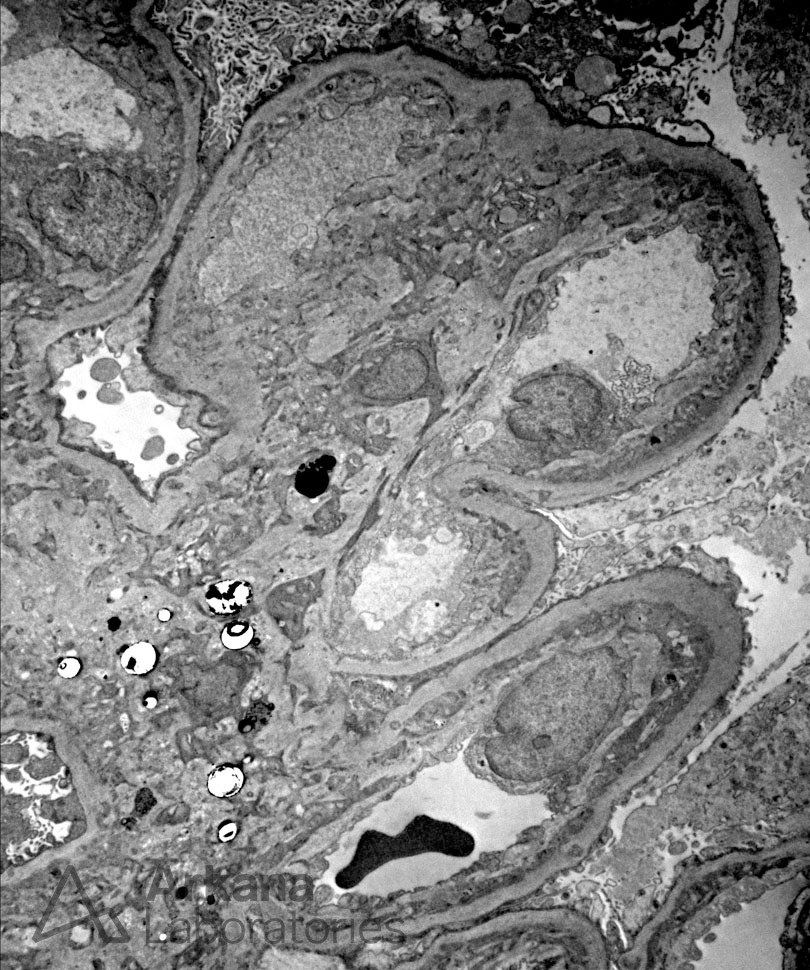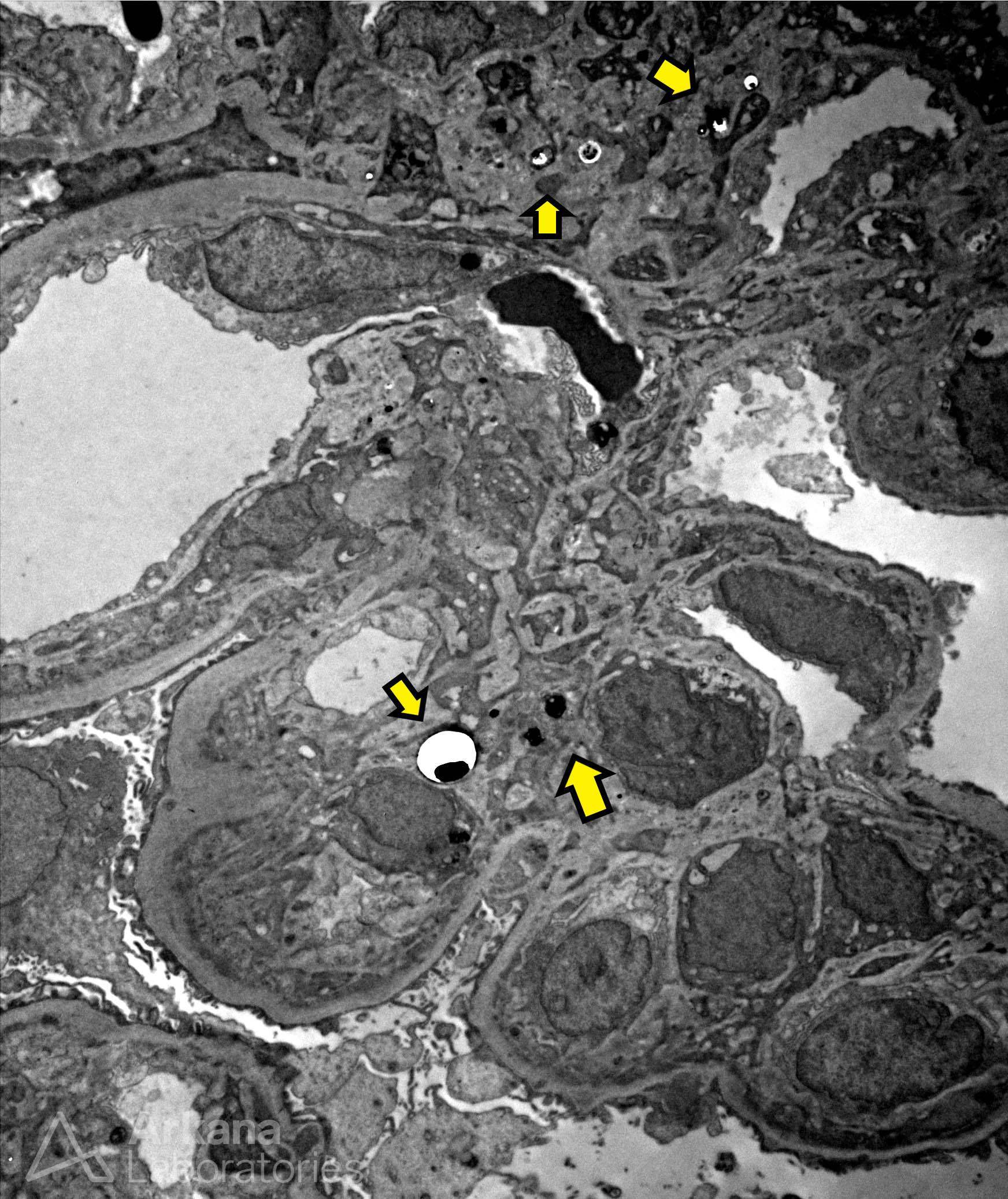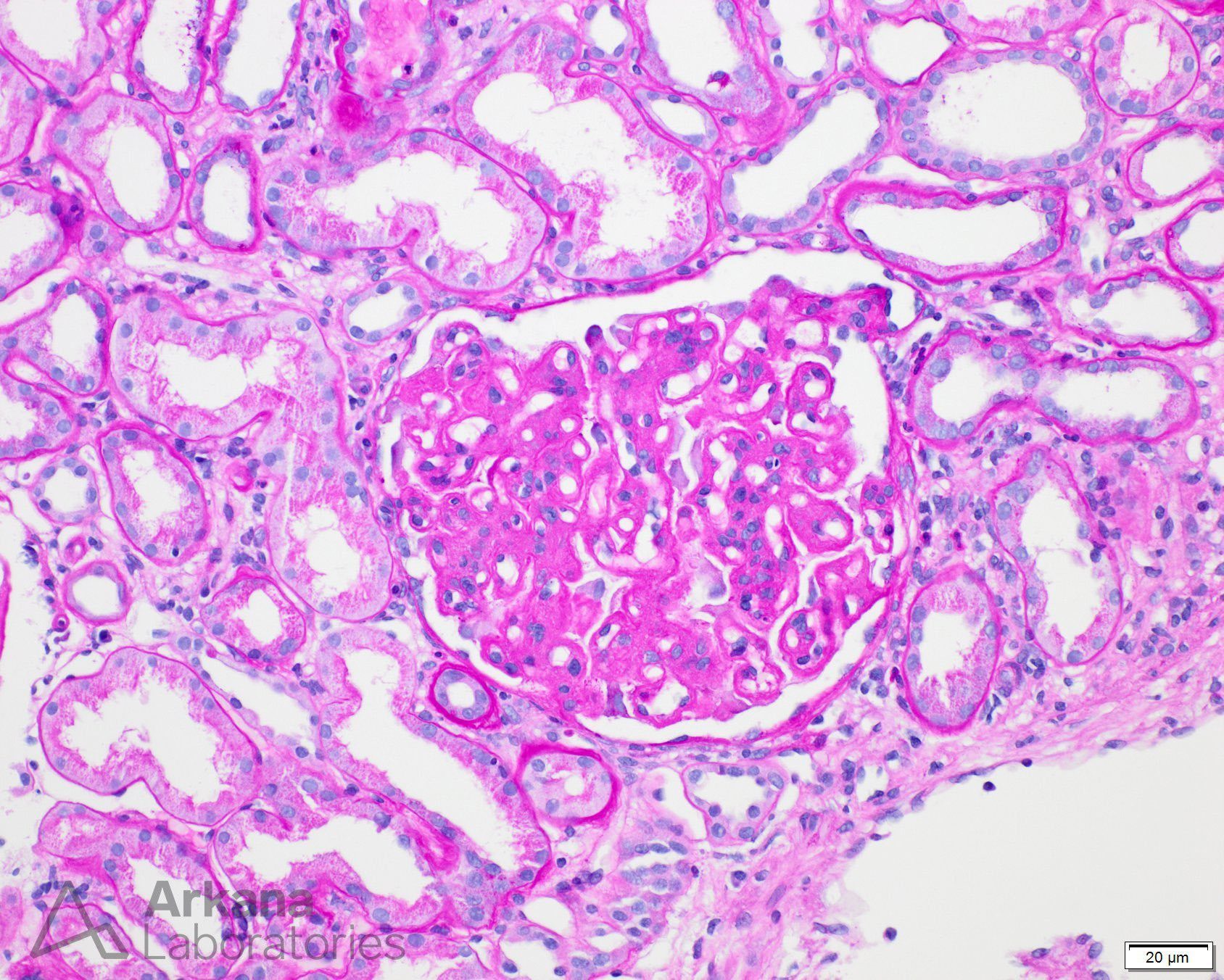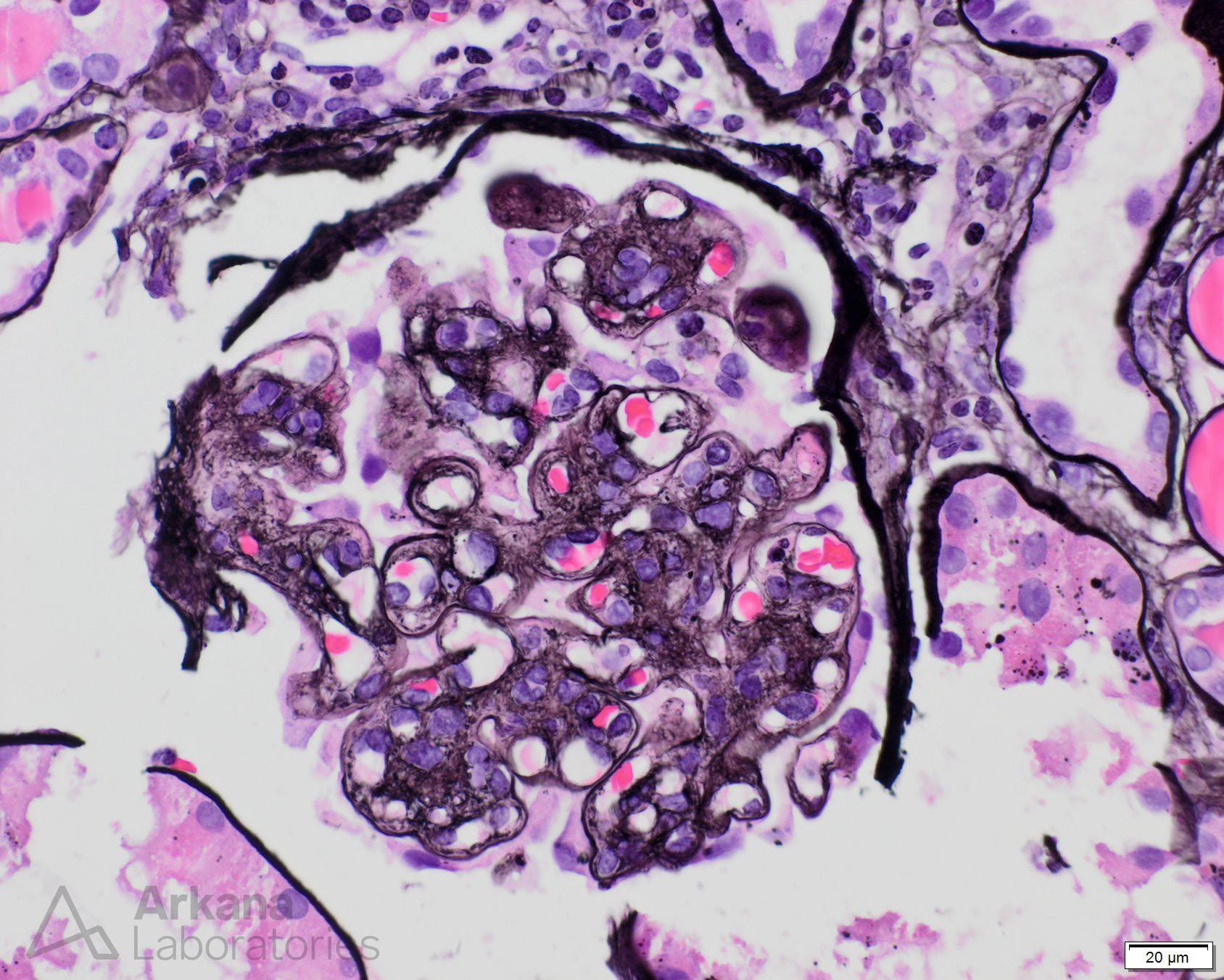This is the biopsy of a 45 yo with alcoholic cirrhosis, bacteremia, hematuria, proteinuria and AKI. IF shows IgA (3+), IgM (1+), C3 (2+), C1q (2+), and equal kappa and lambda (3+). EM is shown below.

The electron microscopy photograph shows mesangial lipid and mesangial and subendothelial electron-dense deposits, with new GBM formation. The findings are consistent with hepatic glomerulosclerosis, which is due to failure of normal liver clearance mechanisms, leading to accumulation of lipid and IgA in the glomeruli (often with concomitant other immunoglobulins and Complement factors, including C1q). Hepatic glomerulosclerosis can occur with portal hypertension alone, without cirrhosis, and is more often seen in cirrhosis due to alcohol than other reasons. Correction of portal hypertension leads to the remission of proteinuria and hematuria, and the disease has not been reported to recur in liver-transplant recipients.
By light microscopy, in this case, there was mesangial and endocapillary hypercellularity (Fig 2) and capillary wall double contours (Fig 3). Immunofluorescence showed mesangial and capillary wall IgA (Fig 4), IgM (Fig 5), C1 (Fig 6), C3 (Fig 7), kappa (fig 8), and lambda (Fig 9). Ultrastructural examination revealed mesangial lipid (Fig 10, arrows), and mesangial and subendothelial deposits.
Quick note: This post is to be used for informational purposes only and does not constitute medical or health advice. Each person should consult their own doctor with respect to matters referenced. Arkana Laboratories assumes no liability for actions taken in reliance upon the information contained herein.









